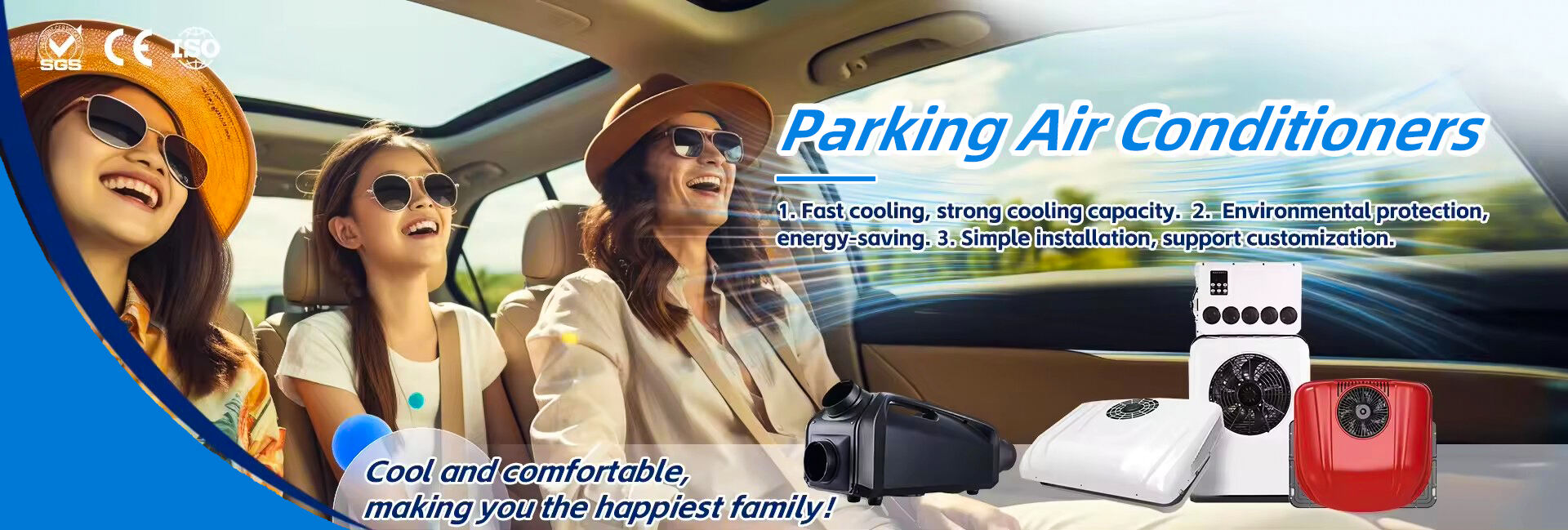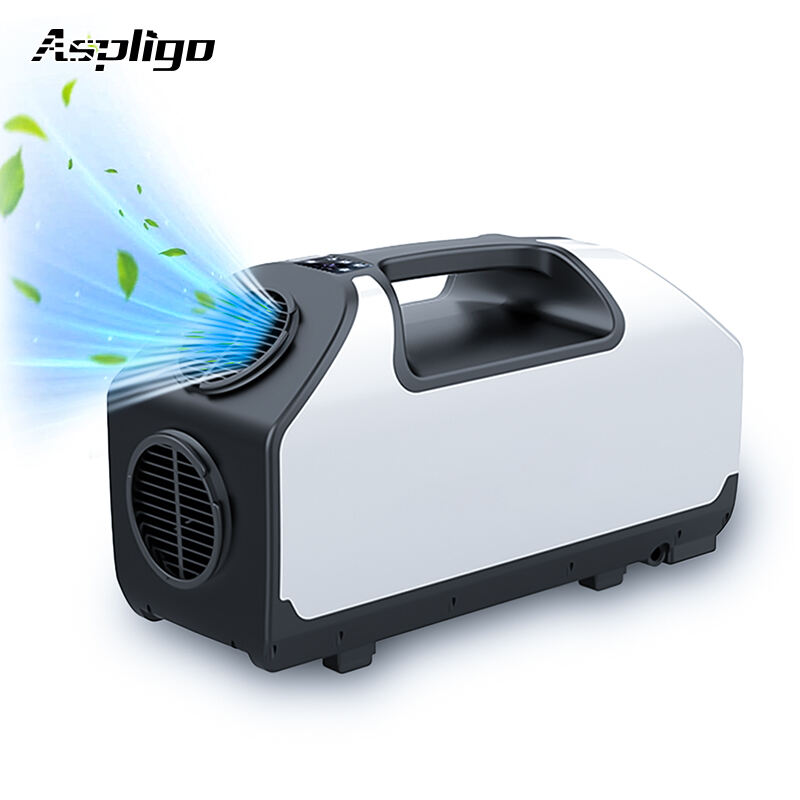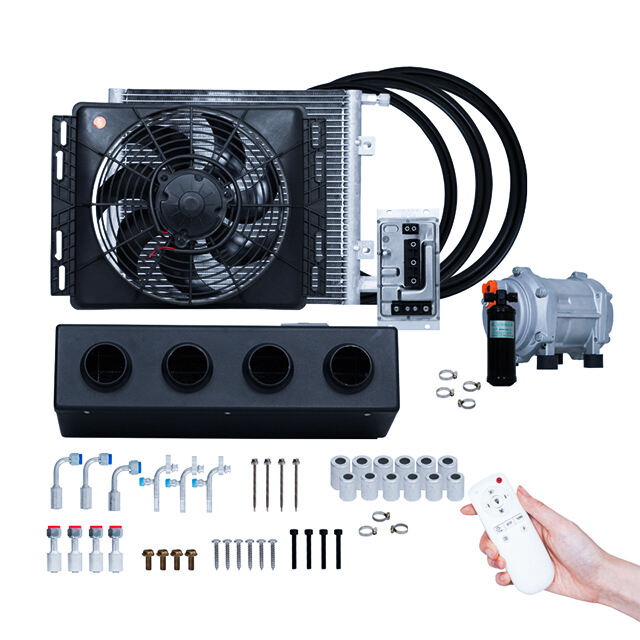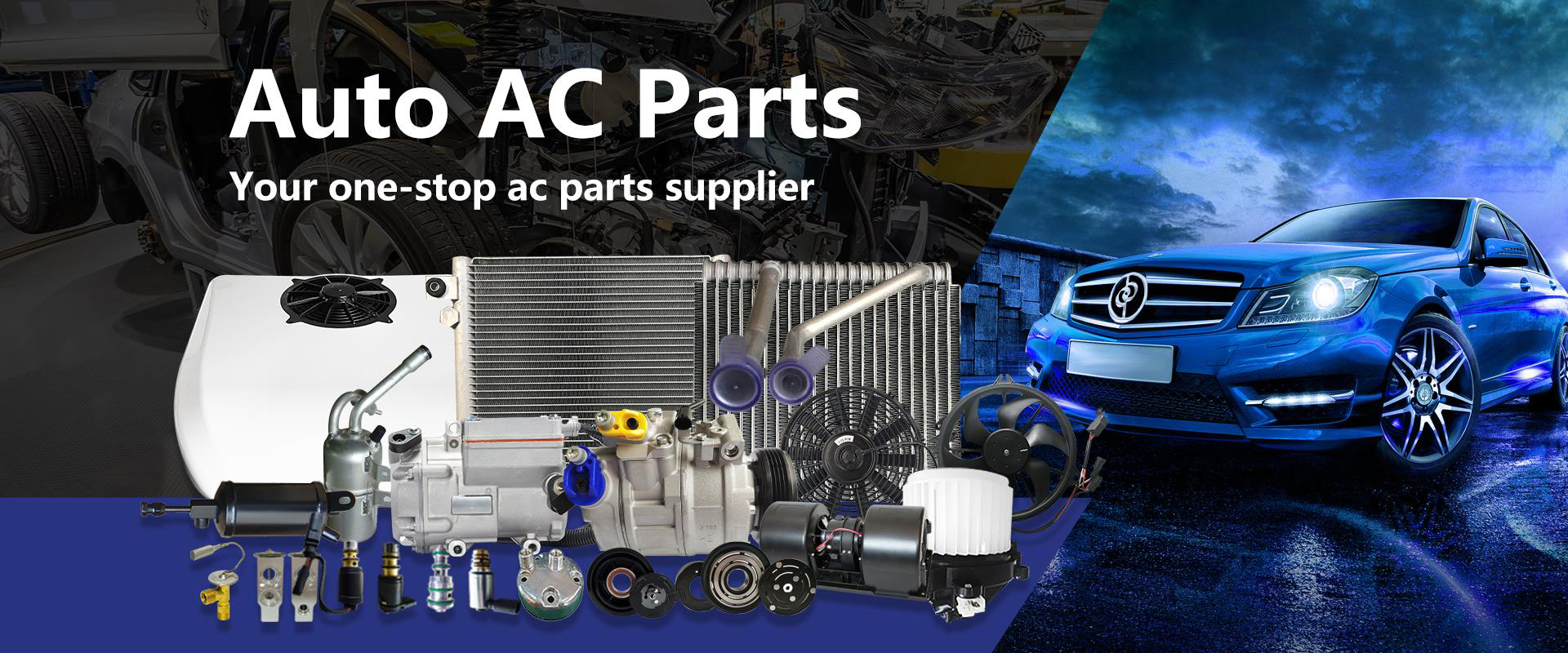Air conditioning compressor: the heart of the refrigeration system
The Role of the Air Conditioning Compressor in Refrigeration Systems
The air conditioning compressor acts like the heart of any refrigeration system, basically doing all the heavy lifting when it comes to moving refrigerant around the whole unit. What happens here is pretty straightforward but super important for cooling. The compressor takes in refrigerant gas at low pressure and then squishes it down until it becomes high pressure and hot. This hot gas moves through the system where it releases heat outside, making our indoor spaces cooler in the process. Without this basic function working properly, air conditioners just wouldn't be able to maintain comfortable temperatures inside buildings consistently.
Knowing how various compressor types work and what makes them tick really helps when troubleshooting problems or getting the most out of an air conditioning system. There are basically five kinds commonly found in these systems: reciprocating, rotary, scroll, screw, and centrifugal compressors. Take reciprocating compressors as an example they operate kind of like car engines, using pistons to squeeze refrigerant gas. These particular units show up everywhere from home AC systems all the way through to big industrial cooling setups where temperature control matters a lot. Their piston action creates pressure changes needed for effective heat transfer across different environments.
An air conditioner's performance really depends on how good its compressor is working since this component directly impacts both cooling power and electricity usage. When a compressor stays in good shape through proper maintenance, it makes the whole system run better while cutting down on monthly energy bills. Studies show that when compressors work correctly, they actually help prolong the life of the whole AC unit too, which means fewer expensive fixes or replacements down the road. For homeowners and building managers alike, keeping track of compressor health through routine checks and replacing worn out parts before they fail completely remains essential for maintaining consistent cooling performance without breaking the bank on repairs.
Types of Compressors Used in Air Conditioning
Knowing what kind of compressor comes with different air conditioning units really matters when picking out something efficient for particular jobs. Take reciprocating compressors for instance they show up everywhere because of their simple setup and tendency not to break down much. These work with pistons connected to a crankshaft basically pumping away inside there. Because of this mechanical action, they tend to perform best where higher pressures are needed in the system. Many technicians still prefer them for certain installations despite newer alternatives on the market today.
Scroll compressors are pretty efficient devices that work by using two spiral shaped components to squeeze refrigerant gas. What sets them apart is how quietly they run compared to other types of compressors. Because of this quiet operation, many homeowners prefer them in living spaces where constant noise from appliances can become annoying over time. The way these compressors are built means there's actually less going on inside mechanically speaking. They typically have around half as many moving parts as traditional reciprocating models do. Fewer parts usually means less breakdowns down the road and not so much need for regular servicing either.
Rotary compressors employ rotating mechanisms to compress refrigerant and are known for their smooth and consistent operation. These compressors are versatile, fitting well into both residential and commercial air conditioning systems. Their design allows for compact and efficient machinery, making them suitable for a wide range of cooling capacities.
When companies take time to understand what makes different compressors tick, they're better positioned to pick the right air conditioning units for their needs. Knowing this stuff means systems can be set up properly for whatever environment they need to handle, from keeping homes comfortable to making sure businesses run efficiently. Getting familiar with how these various compressors work actually leads to better cooling results while cutting down on power usage too. And let's face it, saving energy isn't just good for the bottom line anymore it's becoming something almost every business wants to check off their sustainability list.
Common Issues and Maintenance of Compressors
When something goes wrong with compressors, knowing what to look for matters a lot. The usual warning signs tend to be strange sounds coming from the unit or when it just doesn't cool as well as before. Most of the time, these problems stem from electrical components acting up or simply having too much or too little refrigerant inside. Checking these parts regularly makes sense if we want everything running smoothly without surprises. Skipping maintenance can lead to spending big bucks later on when replacement becomes unavoidable instead of fixing smaller issues early on.
Knowing how much it costs to replace a car AC compressor can really help when setting aside money for repairs. Most people find themselves paying between eight hundred and twelve hundred dollars for this job, depending on what kind of car they own and where they get the work done. Labor rates vary quite a bit too. Getting familiar with these numbers makes sense because nobody wants their wallet hit unexpectedly when summer rolls around. Plus, keeping track of maintenance costs ensures the car stays cool without breaking down at inconvenient times.
Keeping compressors running smoothly through routine maintenance really does stretch their useful life quite a bit. For automotive AC systems specifically, cleaning out the evaporator regularly makes all the difference, along with checking those electrical connections every now and then for wear or corrosion. When these basic tasks get done on schedule, they keep the compressor working properly while making sure the whole cooling system performs better day after day. The truth is, most breakdowns happen because people neglect simple upkeep. A little time spent on preventive care saves a ton of money down the road when big repairs become necessary instead.
Environmental Impact of Compressors in HVAC Systems
The heart of HVAC system efficiency lies in the compressor, which typically eats up most of the power these systems consume overall. When we boost how well compressors work, we cut down on electricity use significantly, which means fewer emissions from running them all day long. Take variable speed compressors for instance. These newer models adjust their output based on what's actually needed at any given moment rather than running full blast all the time. This smart approach cuts energy waste while saving money on bills too. Many facilities have reported cutting their cooling costs by almost half after switching to this technology.
Innovations in compressor tech play a major role in cutting down our carbon footprint when it comes to fighting climate change. These days, newer compressors just don't spew out as many greenhouse gases as older models did, plus they eat up way less electricity overall. That kind of improvement really helps bring down total emissions across the board. We see this most clearly in cities where heating, ventilation and air conditioning systems run constantly throughout buildings. The upgrades matter there because those systems account for such a huge chunk of energy consumption in urban environments.
The rules governing HVAC systems are getting stricter when it comes to being environmentally friendly these days. Because of this, companies need to include better compressor tech if they want to stay within legal boundaries. Manufacturers have no choice but to keep coming up with new ideas so their products can pass today's tests while still standing up to what regulators might demand tomorrow. Looking at the bigger picture, compressor technology remains central to how we achieve both energy savings and greener operations across all types of heating, ventilation and air conditioning systems.
Products Overview: Effective Air Conditioning Solutions
When considering effective air conditioning solutions for varying needs, several products stand out due to their unique features and capabilities.
- Portable Air Conditioning PAC1003: This highly flexible cooling unit is perfect for personal use, particularly in smaller spaces such as bedrooms or offices. Its compact design and efficient cooling technology make it a convenient choice for maintaining comfortable indoor temperatures. Whether used at home or taken outdoors, its portability ensures that you're prepared to beat the heat wherever you go.
- Portable Air Conditioning PAC1020: Designed for larger home and office settings, the PAC1020 combines advanced technology with efficient operation. This improves its cooling performance, making it an excellent choice for environments requiring effective climate control. Its quiet operation ensures minimal disruption, making it suitable for both professional and household settings.
- Universal Air Conditioning Kit 24V Electric Compressor Evaporator Kit: For those seeking versatility in vehicle air conditioning systems, this universal kit offers adaptability to various setups. The comprehensive nature of the kit ensures compatibility with multiple vehicle types, including RVs and trucks, providing an effective solution for on-the-go air conditioning needs.
- OE Quality PB 472A SSJAS-E27 SHAN-31 for Nissan Toyota Corolla: Tailored specifically for Nissan and Toyota Corolla models, this product ensures a direct fit and boasts straightforward installation. It is engineered to deliver reliable air conditioning performance, maintaining driver and passenger comfort through efficient climate control.
These air conditioning solutions cover various needs, from personal comfort indoors and on the move to vehicle-specific installations, making them versatile options for maintaining a pleasant atmosphere.
Future Trends in Air Conditioning and Refrigeration Systems
Air conditioning and refrigeration systems stand at the brink of major changes thanks to advances in compressor tech. The industry has been working hard lately to make these machines work better while using far less power, something really important given all the environmental issues we face today. Take variable speed compressors for example many companies now spend big bucks researching these devices because they adjust their operation based on actual needs instead of running full blast all the time. This means equipment runs smarter not harder, cutting down electricity bills and carbon footprints simultaneously. Some manufacturers already offer models that save up to 30% energy compared to older versions, showing real progress towards greener solutions without breaking the bank for consumers.
The cooling sector has started shifting toward greener options that save energy. Many companies now prefer natural refrigerants for their compressors, something that works hand in hand with new smart tech additions. These improvements let operators manage their systems much better, cutting down on wasted power and shrinking carbon emissions. We're seeing this change across the globe as businesses try to become more eco friendly. Take Mitsubishi Electric for instance they've been leading the charge in going green for years, pouring millions into research and building out facilities specifically designed for these kinds of sustainable innovations.






